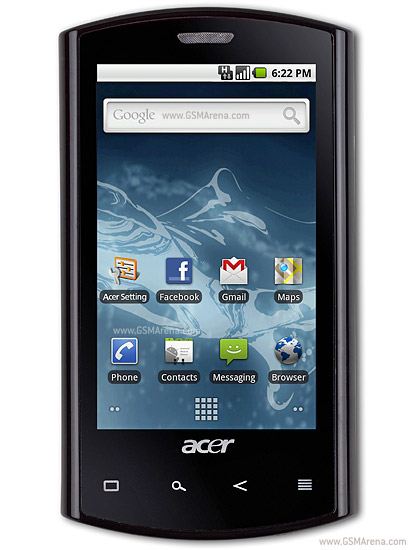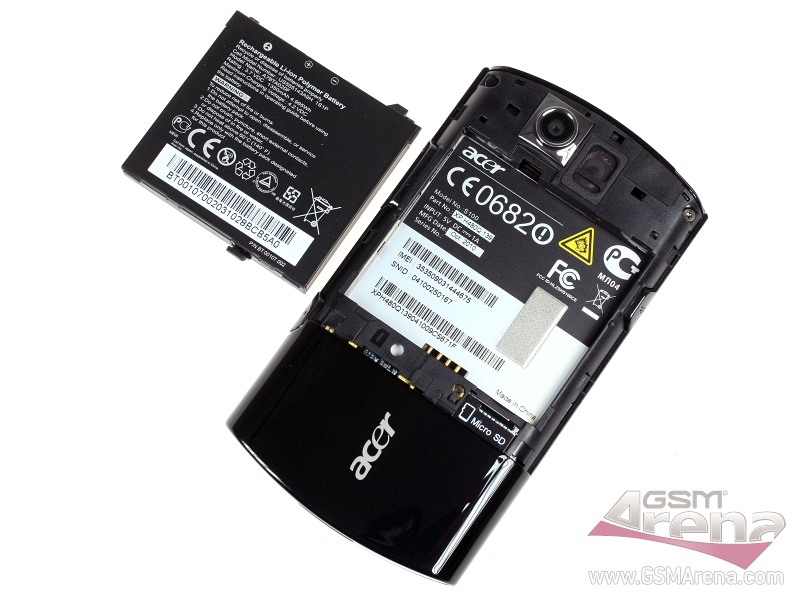
Overview of the Acer Liquid E
The Acer Liquid E was introduced as a mid-range smartphone during a significant transition phase in mobile technology, specifically in the year 2010. The smartphone market was beginning to flourish with Android gaining a foothold as a major operating system. The Acer Liquid E offered a balanced mix of features that were aimed at satisfying the needs of users looking for functionality without the exorbitant pricing of flagship models.
Design and Build
Released in August 2010 after being announced in February of the same year, the Acer Liquid E presented itself in a distinctly modern casing that balanced aesthetics and functionality. With dimensions of 115 x 62.5 x 12.5 mm and a weight of 135 g, the device offered a compact and manageable form factor that appealed to consumers looking for portability without compromising on screen size. The use of a Mini-SIM was standard at this time and ensured broad network compatibility.
Display
The device featured a 3.5-inch TFT display accommodating 256K colors at a resolution of 480 x 800 pixels. This resolution resulted in a pixel density of approximately 267 ppi, providing a decent display clarity for its class during the period. The screen-to-body ratio stood at around 48.5%, a typical ratio for smartphones of that generation.
Performance
Under the hood, the Acer Liquid E was powered by the Qualcomm QSD8250 Snapdragon S1 chipset, which included a 768 MHz Scorpion CPU and an Adreno 200 GPU. While these were modest specifications, they provided acceptable performance for regular apps and light multitasking when paired with the Android 2.1 Eclair OS, which was upgradable to Android 2.2 Froyo. This OS provided essential features such as support for Adobe Flash and other usability improvements.
Memory and Storage
The smartphone came equipped with 512MB of RAM and 512MB of internal storage, which was common for budget devices of that era. A significant aspect of the Acer Liquid E was the inclusion of a microSDHC card slot, allowing users to expand their storage capacity to suit personal media and app requirements.
Camera Capabilities
The Acer Liquid E was fitted with a 5 MP autofocus rear camera. It offered basic photography functions and was capable of recording video at 480p resolution at 20 frames per second. Although there was no front-facing camera, which was typical of many smartphones during that time, the main camera sufficed for casual photography and video capturing.
Audio and Communication
The smartphone included a loudspeaker and a standard 3.5mm audio jack, offering convenience for media consumption and audio output. In terms of wireless communication, the Acer Liquid E supported Wi-Fi 802.11 b/g and Bluetooth 2.0 with A2DP, allowing for basic wireless connectivity and device pairing.
Battery Life
Equipped with a removable Li-Ion 1350 mAh battery, the Acer Liquid E offered up to 400 hours of standby time and up to 5 hours of talk time. The removable battery was a valuable feature, granting users the ability to replace batteries easily, which has since become a less common feature in modern smartphones.
Additional Features
The phone included basic sensors like an accelerometer and proximity sensors, enhancing user interaction through auto-rotate features and screen-off functionality during calls. The web browser supported HTML and Adobe Flash, broadening the scope of online content accessible to users. However, a notable exclusion was a built-in radio, which was not crucial but was sometimes appreciated by users for on-the-go entertainment.
Colors and Pricing
Acer offered the Liquid E in a variety of colors including Black, White, and Red, with a special Ferrari edition also available, catering to brand enthusiasts and consumers desiring a distinctive style. At launch, the device was priced at approximately 90 EUR, positioning it attractively as a cost-effective option for consumers not looking to invest in high-end devices but still wanting a capable and reliable smartphone experience.
Conclusion
In retrospect, the Acer Liquid E serves as an interesting reflection of the smartphone landscape of the early 2010s. It managed to deliver a balance of functionality, style, and affordability, addressing a wide range of consumer needs. Even though it has since been discontinued and replaced by more powerful successors, the Liquid E represented an important step in expanding accessibility to smartphone technology.
Key Features of Acer Liquid E
- Network: Supports GSM/HSPA with 3G capabilities.
- Display: 3.5 inches TFT screen with 480 x 800 pixels resolution.
- Operating System: Pre-installed with Android 2.1 (Eclair) and upgradable to Android 2.2 (Froyo).
- Processor: Powered by Qualcomm QSD8250 Snapdragon S1 CPU with 768 MHz Scorpion processor.
- Memory: Equipped with 512MB RAM and 512MB internal storage, expandable via microSDHC.
- Main Camera: 5 MP autofocus camera with 480p video recording.
- Connectivity: Includes Wi-Fi, Bluetooth 2.0, GPS, A-GPS, and miniUSB.
- Audio: Features a loudspeaker and a 3.5mm headphone jack.
- Battery: Removable Li-Ion 1350 mAh battery offering up to 5 hours talk time.
- Sensors: Comes with an accelerometer and proximity sensor.
- Design: Available in Black, White, Red, and a Ferrari edition.
Disadvantages of Acer Liquid E
- Discontinued model, making it difficult to find support and spare parts.
- Limited 2G and 3G bands, lacking modern LTE support.
- Small display size (3.5 inches) compared to modern smartphones.
- Slightly outdated TFT display with only 256K colors.
- Low screen-to-body ratio (~48.5%).
- Old Android versions (Eclair, upgradable to Froyo) with limited app compatibility.
- Weak CPU (768 MHz Scorpion) and GPU (Adreno 200) for current applications.
- Small RAM (512MB) and internal storage (512MB), affecting performance.
- No front-facing selfie camera.
- No FM radio feature.
- Limited video recording quality (480p@20fps).
- MiniUSB instead of the more common microUSB or USB-C.
- Relatively low battery capacity (1350 mAh) by today's standards.














View Also
More Phones
All Rights Reserved +14069 Phones © Mobilawy 2025
























